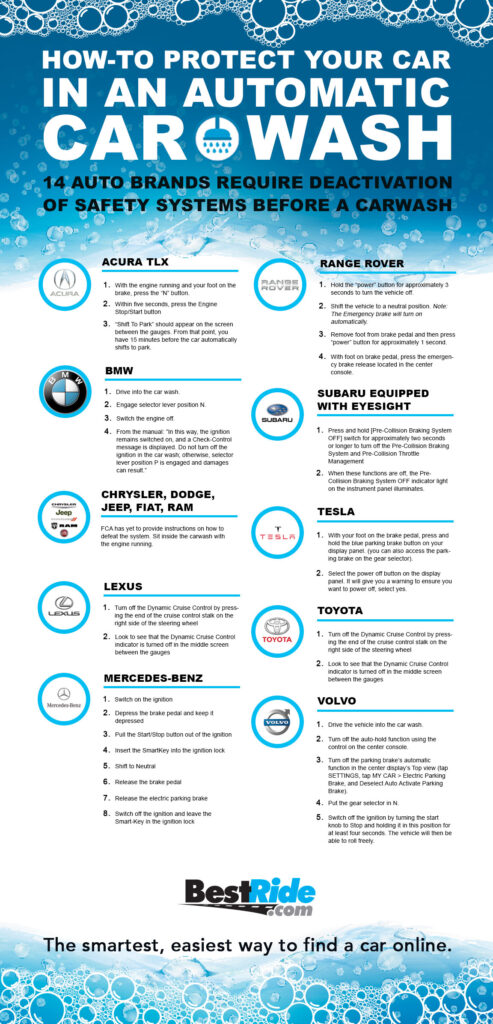
Washing your car regularly is essential for maintaining its appearance and protecting its value. While there are various methods for cleaning your vehicle, automatic car washes offer a convenient and efficient solution. However, a common question arises: should you turn off your car in an automatic car wash? This article will delve into the safety and fuel efficiency benefits of turning off your engine during an automatic car wash, providing you with valuable insights to make an informed decision.
We’ll explore the potential risks associated with leaving your engine running, discuss the environmental and economic advantages of shutting it down, and outline best practices for ensuring a safe and efficient car wash experience. By following these guidelines, you can enjoy a clean and sparkling vehicle while prioritizing safety and responsible driving habits.
Automatic Car Wash Safety
Automatic car washes are designed to safely clean your vehicle using automated brushes, high-pressure water jets, and specialized cleaning solutions. However, leaving your engine running during the wash process presents several potential safety hazards.
Firstly, accidental acceleration can occur if your foot slips off the brake pedal or if there’s a malfunction with the car’s electronic systems. In an enclosed environment like a car wash tunnel, this could lead to collisions with machinery or other vehicles. Secondly, stalling your engine within the wash tunnel can disrupt the cleaning process and potentially damage your vehicle or the equipment.
Finally, leaving your engine running exposes you and others to harmful exhaust fumes, which can accumulate in the confined space of the car wash. Turning off your engine eliminates these risks and ensures a safer experience for everyone involved.
Avoiding Electrical Issues
While less common, there’s a slight risk of electrical issues arising from leaving your engine running during a car wash. Water and electricity don’t mix well, and even a small splash could potentially damage sensitive electronic components in your vehicle. Turning off your engine minimizes this risk by reducing the amount of electrical current flowing through your car’s systems.
Fuel Efficiency Tips
Turning off your engine while waiting in line for an automatic car wash can also contribute to fuel efficiency. Even idling for a few minutes consumes a small amount of gasoline, which adds up over time. By shutting down your engine during these brief periods, you can save on fuel costs and reduce your carbon footprint.
Optimizing Fuel Consumption
In addition to turning off your engine while waiting in line, consider adopting other fuel-saving practices when driving to and from the car wash. Maintain a steady speed, avoid rapid acceleration and braking, and keep your tires properly inflated to minimize rolling resistance. These simple adjustments can significantly improve your vehicle’s fuel economy.
Engine Off in Car Wash
The general consensus among automotive experts is that it’s best practice to turn off your car in an automatic car wash. This recommendation stems from the safety and environmental benefits outlined above.
By shutting down your engine, you eliminate the risk of accidental acceleration or stalling within the wash tunnel, reduce exposure to harmful exhaust fumes, and conserve fuel. While some individuals may argue that leaving their engine running provides a sense of security or convenience, these perceived benefits are outweighed by the potential hazards and environmental impact.
Parking Brake Engagement
When turning off your car in an automatic car wash, it’s crucial to engage the parking brake for added safety. This prevents your vehicle from rolling unexpectedly while it’s stationary within the wash tunnel.
Ensure that the parking brake is firmly engaged before exiting your car and proceeding through the wash cycle.
Park Mode for Safety
Before turning off your engine, always shift your car into “Park” mode. This ensures that the transmission is securely locked in place, preventing any unintended movement while the vehicle is idle.
Combining “Park” mode with the engaged parking brake provides a double layer of security, minimizing the risk of your car rolling during the wash process.
Conclusion
Turning off your engine in an automatic car wash offers significant safety and fuel efficiency benefits. By following best practices such as engaging the parking brake and shifting into “Park” mode, you can enjoy a clean and sparkling vehicle while prioritizing responsible driving habits. Remember, prioritizing safety and environmental consciousness should always be at the forefront of your decision-making when it comes to car care.
